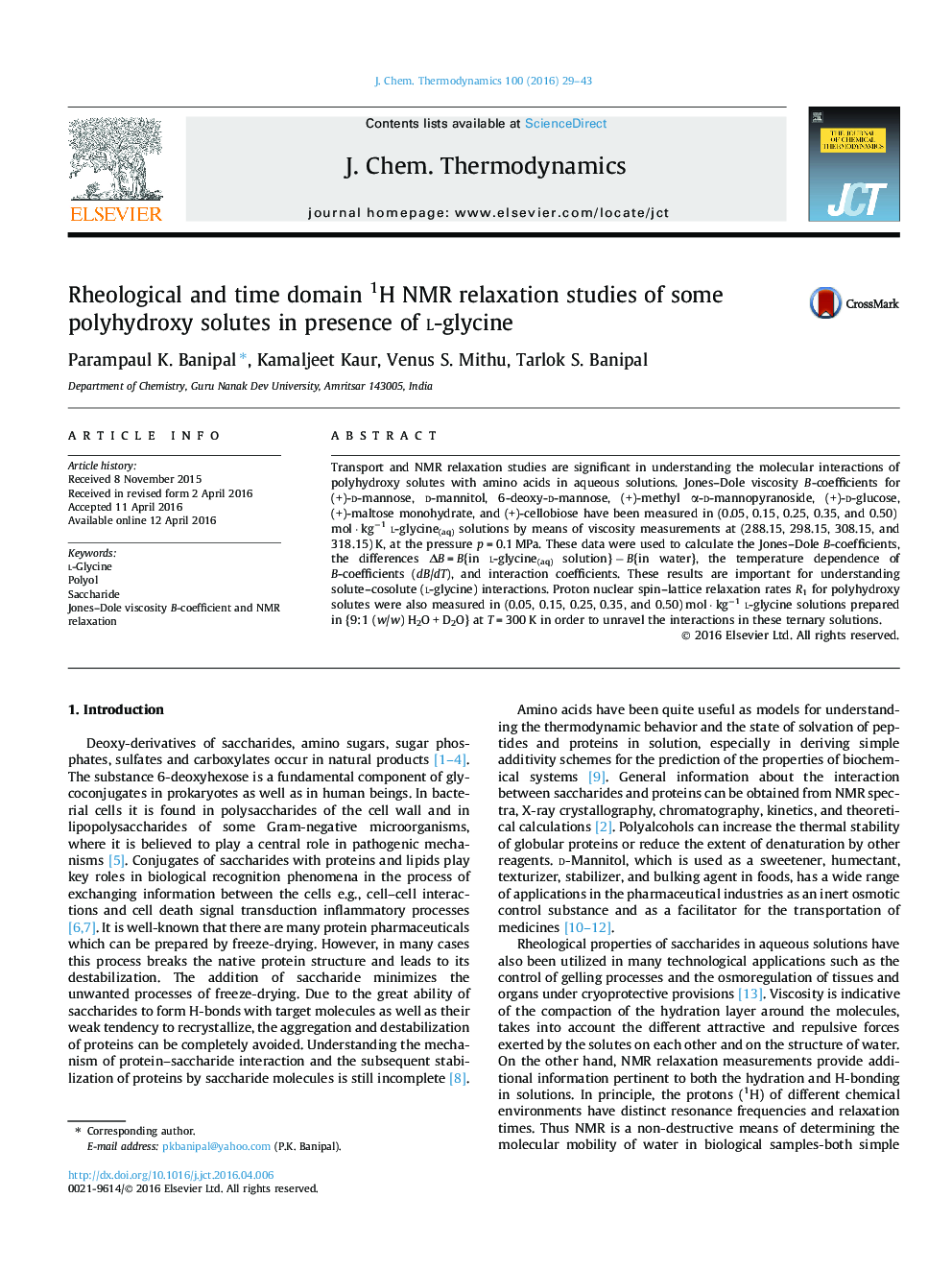| Article ID | Journal | Published Year | Pages | File Type |
|---|---|---|---|---|
| 214902 | The Journal of Chemical Thermodynamics | 2016 | 15 Pages |
•The positive ΔB values indicate the dominance of hydrophilic–ionic interactions.•The hydrophilic–ionic interactions strengthened with temperature generally.•The B /V2°V2° values suggest that polyhydroxy solutes are highly solvated.•The relaxation rates R1 of the disaccharides are greater than for monosaccharides.•(+)-d-Mannose and (+)-cellobiose have stronger tendencies to interact with the l-glycine.
Transport and NMR relaxation studies are significant in understanding the molecular interactions of polyhydroxy solutes with amino acids in aqueous solutions. Jones–Dole viscosity B-coefficients for (+)-d-mannose, d-mannitol, 6-deoxy-d-mannose, (+)-methyl α-d-mannopyranoside, (+)-d-glucose, (+)-maltose monohydrate, and (+)-cellobiose have been measured in (0.05, 0.15, 0.25, 0.35, and 0.50) mol · kg−1l-glycine(aq) solutions by means of viscosity measurements at (288.15, 298.15, 308.15, and 318.15) K, at the pressure p = 0.1 MPa. These data were used to calculate the Jones–Dole B-coefficients, the differences ΔB = B{in l-glycine(aq) solution} − B{in water}, the temperature dependence of B-coefficients (dB/dT), and interaction coefficients. These results are important for understanding solute–cosolute (l-glycine) interactions. Proton nuclear spin–lattice relaxation rates R1 for polyhydroxy solutes were also measured in (0.05, 0.15, 0.25, 0.35, and 0.50) mol · kg−1l-glycine solutions prepared in {9:1 (w/w) H2O + D2O} at T = 300 K in order to unravel the interactions in these ternary solutions.
Graphical abstractFigure optionsDownload full-size imageDownload as PowerPoint slide
